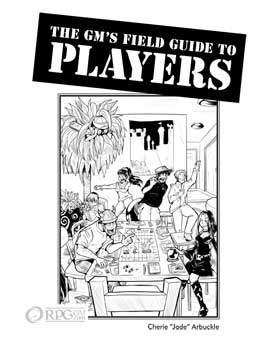I thumbed through my advanced copy of KQ #11 (okay, since it’s a PDF, I didn’t exactly thumb — more paged down through) — the first issue of KQ I’d ever seen, and started to feel the excitement I used to have when looking through early issues of Dragon magazine.
15 articles (counting Maps and Free City), 9 of which I could immediately apply to my game and 5 more which, with some adjustments, could be adapted to fit my game. The visual layout of the magazine is minimalist — something I like very much. Color illustrations and splash graphics are nice to look at, but often eat up space in magazines I’d rather have taken up with ideas and text. KQ balances graphics and text well.
I particularly enjoyed Uvandir: The Pride of Craftsman — an alternate take on dwarves which seems to fit with the way I’ve been wanting to take dwarves in my own game world. Even as a veteran World of Darkness gamer, I was happy to see two articles reminding us that two favorite supernatural monsters (vampires and werewolves) are just that — monsters. It was a pleasant change from angsty soul-searching and eco-rage. I found the article on werewolves as PCs (Howling Werebeasts) especially helpful — full of great ideas on how to remind players that being a were is not like having a limited polymorph or shape-shifting ability. Were-creatures aren’t just powerful alternate forms — lycanthropy is a curse, first and foremost, and this article gave me some useful tips on how to bring that home to players.
The articles Running Across the Screen and Haunted by the Spirit of the Rules have good, solid advice on being a GM. The first one consists of interviews from industry designers on how to be a good GM, while the second reminds us that it’s the spirit of the rules that matters. I’d never thought of putting it that way before, but I’ll definitely be thinking about it the next time I have a rules-abusing player at my table.
I’d don’t play 4th ed, so I mostly skimmed the Wishing Well (an article about how to codify and use wishes in a game), but it did get my brain working on ways to structure the power of wishes in 3.x ed and other game systems. Whack Jacks and Harpy Nets got me thinking about how intelligent monsters would enhance their natural abilities with specially-designed weapons. I’m almost ashamed to admit that the idea never crossed my mind before I read this article.
Torture and Fear on the Tabletop puts teeth back in torture, creating ways to put the screws to (so to speak 😉 ) even characters with huge pools of hit points. Same Rules, Different Treasure gives ideas on how to make magic items interesting again with little to no modification of game mechanics. Philip Larwood, in Monstrous Paragons, discusses PC “monster” races for paragon-level characters. The article Mysteries of the Philosopher’s Stone, tells us how to use this real-world legendary item in fantasy games. While aimed specificially at D&D, the article does include some ideas (in a separate section of boxed text) for using it with Mage: the Ascension. I wouldn’ve like to see a bit on how to adapt it to Ars Magica along with the Mage data, but it’s a minor quibble and I can easily adapt the idea to ArM by myself.I’ve often found myself less than enthused about rangers having the ability to cast spells. The Spell-less Ranger gives me the alternative I’ve been looking for.
———–
On the whole, I couldn’t be more pleased with this magazine. It’s been quite a while since I’ve gotten this many ideas out of a gaming mag. Please excuse me while I go subscribe and look up back issues.
Have you used any of the material from this or previous issues of Kolbold Quarterly? If so, please pass your experience on to us.





